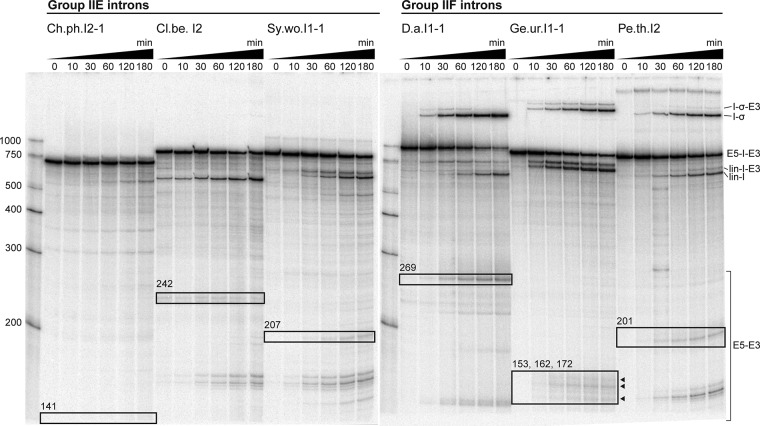FIGURE 2.
Splicing of group IIE and IIF introns. Splicing products of three group IIE and three group IIF introns. Reaction time points and nucleotide size markers are indicated on top and to the left of the gel, respectively. Precursors (E5-I-E3) and linear introns (lin-I) are labeled according to their predicted sizes. Ligated exon species (E5-E3) were verified by sequencing. Ligated exon bands are boxed, and product sizes are indicated. Intron lariat/intron circle species (I-σ) were verified by sequencing for Ge.ur.I1-1 and Pe.th.I2. Presumable splicing intermediates, where the 3′-exon is still attached to the linear intron (lin-I-E3) and intron lariat (I-σ-E3), are also marked. The group IIE introns were reacted in 500 mM KCl. Although Ch.ph.I2-1 and Cl.be.I2 also spliced in (NH4)2SO4, they reacted much more slowly and did not form slower mobility products that correspond to intron lariat or intron circle (data not shown). Sy.wo.I1-1 was inactive in (NH4)2SO4. We show activity of the group IIF introns in (NH4)2SO4. All Group IIF introns were also active in KCl, but formation of slower mobility products was reduced (data not shown). The splicing rate constant for the D.a. intron was 0.012 min−1 under conditions shown. See Figure 5 for kinetic analysis of other introns. For detailed splicing conditions see Materials and Methods.

